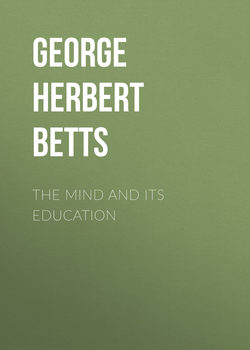Читать книгу The Mind and Its Education - George Herbert Betts - Страница 11
CHAPTER II
3. HOW WE ATTEND
ОглавлениеSomeone has said that if our attention is properly trained we should be able "to look at the point of a cambric needle for half an hour without winking." But this is a false idea of attention. The ability to look at the point of a cambric needle for half an hour might indicate a very laudable power of concentration; but the process, instead of enlightening us concerning the point of the needle, would result in our passing into a hypnotic state. Voluntary attention to any one object can be sustained for but a brief time—a few seconds at best. It is essential that the object change, that we turn it over and over incessantly, and consider its various aspects and relations. Sustained voluntary attention is thus a repetition of successive efforts to bring back the object to the mind. Then the subject grows and develops—it is living, not dead.
Attention a Relating Activity.—When we are attending strongly to one object of thought it does not mean that consciousness sits staring vacantly at this one object, but rather that it uses it as a central core of thought, and thinks into relation with this object the things which belong with it. In working out some mathematical solution the central core is the principle upon which the solution is based, and concentration in this case consists in thinking the various conditions of the problem in relation to this underlying principle. In the accompanying diagram (Fig. 4) let A be the central core of some object of thought, say a patch of cloud in a picture, and let a, b, c, d, etc., be the related facts, or the shape, size, color, etc., of the cloud. The arrows indicate the passing of our thought from cloud to related fact, or from related fact to cloud, and from related fact to related fact. As long as these related facts lead back to the cloud each time, that long we are attending to the cloud and thinking about it. It is when our thought fails to go back that we "wander" in our attention. Then we leave a, b, c, d, etc., which are related to the cloud, and, flying off to x, y, and z, finally bring up heaven knows where.
Fig. 4
The Rhythms of Attention.—Attention works in rhythms. This is to say that it never maintains a constant level of concentration for any considerable length of time, but regularly ebbs and flows. The explanation of this rhythmic action would take us too far afield at this point. When we remember, however, that our entire organism works within a great system of rhythms—hunger, thirst, sleep, fatigue, and many others—it is easy to see that the same law may apply to attention. The rhythms of attention vary greatly, the fluctuations often being only a few seconds apart for certain simple sensations, and probably a much greater distance apart for the more complex process of thinking. The seeming variation in the sound of a distant waterfall, now loud and now faint, is caused by the rhythm of attention and easily allows us to measure the rhythm for this particular sensation.
